After all the talk on this forum about what a great container mango 'Pickering' is, I broke down and got one. We'll see if I can find space for it this winter (along with half my other plants). Pine Island Nursery sent me a wonderful 3-gallon 'Pickering', in the midst of an impressive new growth flush:
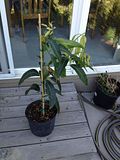
It looked much better right as it came out of the box, but all the new growth had been expanding in the dark, humid conditions of the box for 5 days in shipping and started wilting immediately upon exposure to my climate. I want to try to grow this outside for the summer rather than in the "cushy" humid conditions in my basement, but I still need to keep it as dwarf as possible; I have too many plants already and I need to keep things small to accommodate all of my plant hobby. So I'm planning on "pugging" the plant; should I do it just above the middle 60-degree 2-way branch or just below? I want to keep the plant as wind-resistant as possible. I want it to be as short and well-branched as possible; this survives much better in the wind. I also have a strict 5'9" height limit in my basement for the winter, or the plant will be condemned to only the light from a similar-height east or west facing window in my house. I'm planning on heavy tip-pruning to encourage bushy growth as I do with most of my plants. The new growth has all succumbed to the reality of a Colorado summer since the picture was taken, which I expected from experience. I've grown many mangos from seed here before, but never to blooming size.
I also got a 'Kari' carambola from PIN; it was more damaged in shipping from Florida and lost all but 3 leaves before I got it out of the box:
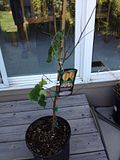
I'm completely fine with that; just like the mango I expected it to lose all of it's humidity-expecting Florida-grown leaves once it got here; if it does it in shipping it actually starts the process of regrowth faster. I have the same issue with most plants I move in and out of my house every year; they lose all of their "indoor" leaves and produce new outside-adapted leaves. My 'Sri Kembangan' carambola is starting a bloom flush for the 6th time since I've had it:
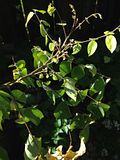
I believe it must be self-incompatible for pollination (
http://tropicalfruitforum.com/index.php?topic=599.0); it is a short-styled type and as such is apparently inherently reliant on another long-styled carambola for pollination. 'Kari' is apparently a long-styled type (I haven't seen it in person- yet) and as such apparently self-compatible as well as capable of pollinating the 'Sri Kembangan'. I plan on cross-grafting the two varieties I have now so that the scions will bloom at the same time as the rootstock. When I can eventually do a side-by-side comparison of the varieties in my conditions, I'll decide which plant I want to keep. Self-compatibility for pollination is a big plus for me; it makes it a lot easier if you are having to hand-pollinate with a brush in the middle of winter. 'Sri Kembangan' has already been frustrating me for a long time...
I've moved most of my tropical plants to their "permanent" outdoor locations for the summer; during the spring I haul them in and out daily to adapt them to the outdoor conditions but keep them from getting too cold at night.
This picture captures most of the tropical fruit plants I keep outdoors for the summer:

From left to right (in pots) there is:
Jaboticaba, Australian Beach Cherry (Eugenia reinwardtiana), behind that an Acerola / Barbados Cherry (not easy to see, but 5' tall), a dwarf guava and behind it a strawberry guava, another E. reinwardtiana, a small bay leaf in the orange pot, a 2-year old Naranjilla in a 10-gallon pot (It better ripen fruit this year!), Babaco papaya and a Steevia in the orange pot, behind them the other 2-year-old Naranjilla; a 'Eustis' limequat and a 'Changshou' kumquat, behind them a 'Sri Kembangan' carambola; another dwarf guava, a Physalis peruviana that was recently decapitated in the wind and hiding behind it a mangosteen (impossible to see in this pic), a orange-flowering Lantana (not a fruit), behind it my pitomba; a Chilean guava (Ugni monlinae), dwarf everberring mulberry, another Chilean guava, Naga Jolokia pepper (green pot- I use it for raccoon and squirrel repellant as well as salsa), a 2-year-old Habanero pepper and more Lantanas. There's an Achachairu in the back somewhere too, and blackberries all along the fence that aren't in pots. That's even a bald cyprus tree on the right half of the picture (not in a pot- 30' tall) to make the plants feel more like they are in Florida and give them light afternoon shade and some hail protection.
The plants are lined up along my fence for wind protection. We seem to have 45-mph winds weekly, with 60+mph winds about once a month, and 80-100 mph winds once or twice a summer, four or more times a year. The fence and large in-ground trees not visible in this picture help provide a bit of a wind break.
My miracle fruit plants stay in my basement for the summer, along with most of the seedlings and extra-tender plants:
View from one corner:

Assorted Garcinia and pulasan from Ethan, plus a sapodilla, plumerias, orchids, amorphophallus and more:
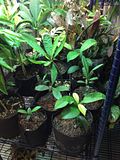
Mangosteen (front) and Achachairu from Ethan, 1 week post-bare-rooting-transplant and just before they were moved back outside:

Madrono from Ethan and 2 Achachairu from Montoso:
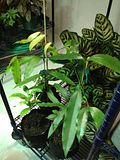
One of my new hybrid jaboticaba seedlings from Adam:
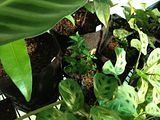
Achachairu #3 and #4 (of 6):
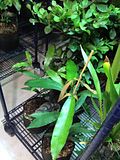
Mangosteen #2 and #3 (both from Montoso):
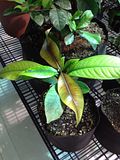
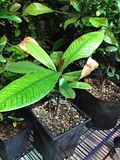
There are more pictures available at:
http://s1188.photobucket.com/albums/z412/ncomf/June%202012/ Kevin

